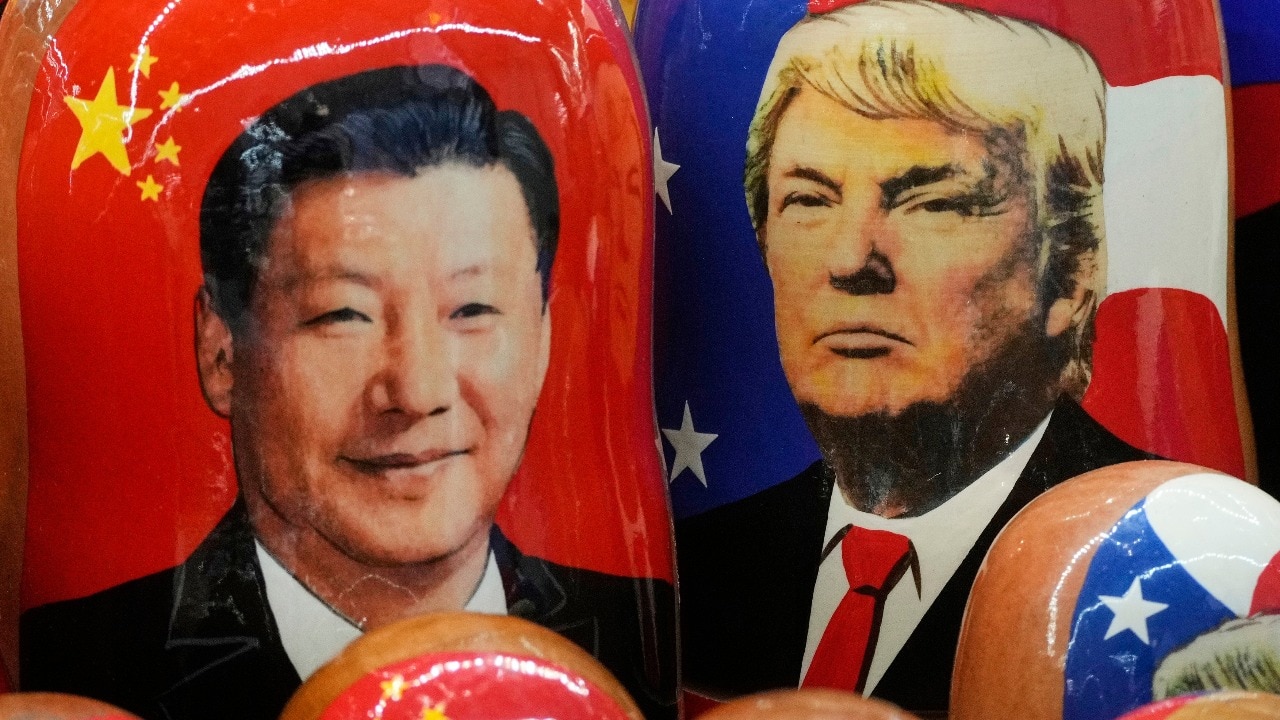 |
|
The article delves into the complexities of the trade relationship between the United States and China, particularly under the presidency of Donald Trump. It highlights the apparent contradictions and strategic shifts in Trump's approach, suggesting a discrepancy between his tough rhetoric and the actual implementation of policies. Initially, Trump adopted an aggressive stance, initiating a tariff battle that saw duties on Chinese goods skyrocketing. However, this approach quickly encountered resistance as China retaliated, prompting Trump to temper his aggression with caution. The article points out that Trump has, in several instances, adopted a lenient stance towards China, exemplified by his decision to keep tariffs on hold. This shift in attitude, it is argued, stems from the realization that China possesses significant leverage, particularly in areas like rare earth minerals and mid-tech manufacturing. The article contrasts Trump's treatment of China with that of allies like India, which have faced punitive measures despite being considered strategic partners in countering China's influence. This apparent inconsistency raises questions about the rationale behind Trump's foreign policy decisions. A key argument presented is that the United States remains heavily dependent on Chinese supply chains, particularly for electronics, industrial machinery, and consumer goods. This dependence limits the effectiveness of tariffs as a coercive tool, as attempts to reroute imports through other countries have had limited success. Furthermore, the article emphasizes China's dominance in the rare earth minerals market, which gives it significant leverage over US production in sectors like electric vehicles, wind turbines, and military equipment. Any restrictions on the export of these minerals can have immediate and costly consequences for Western industries. The article also highlights the domestic economic impact of tariffs, citing modelling data that suggests they have added to consumer prices and slowed GDP growth. This undermines the argument that tariffs are a cost-free way to exert pressure on China. In conclusion, the article suggests that Trump's policy of using tariffs to exert pressure on China has proven to be less effective than anticipated due to the US's dependence on Chinese supply chains, China's control over critical minerals, and the negative impact of tariffs on the US economy. This has forced Trump to adopt a more cautious and accommodating approach towards China, despite his initial tough rhetoric.
The nuances of the US-China trade dynamic are further explored by examining specific instances where Trump's actions seemed to contradict his stated goals. The initial imposition of high tariffs was met with a swift and potent response from China, highlighting the interconnectedness of the two economies. The US reliance on China for a vast array of goods, from consumer products to crucial components for advanced technologies, underscored the limits of unilateral action. Attempts to diversify supply chains, while underway, are proving to be a long-term process, leaving the US vulnerable to short-term disruptions and price fluctuations. Moreover, the article details instances where Trump seemingly extended concessions to China, such as allowing Nvidia to sell advanced chips and refraining from enforcing a ban on TikTok. These actions suggest a pragmatic recognition of the need for cooperation in certain areas, even amidst broader trade tensions. The decision to deny Taiwan's president transit through the US further illustrates the complexities of the relationship, demonstrating the US's careful navigation of the sensitive issue of Taiwan's status. The contrast with the treatment of India, a long-standing ally, raises questions about the consistency of US foreign policy. The imposition of tariffs on Indian imports, citing its purchase of Russian oil, while China, the largest buyer of Russian oil, faced no similar penalties, suggests a selective application of economic pressure. This has fueled criticism and raised concerns about the reliability of the US as a partner. The article also delves into the domestic political dimensions of the trade war, noting calls to restrict H-1B visas for Indians, reflecting anxieties about job displacement. These pressures underscore the challenges of balancing economic interests with political considerations.
The economic analysis within the article reinforces the argument that tariffs alone are insufficient to fundamentally alter the US-China trade relationship. The substantial goods trade deficit, exceeding $295 billion in 2024, highlights the deep-seated structural imbalances. While tariffs may alter some incentives, they have not significantly reduced the overall dependence on Chinese imports. The article points out that some Chinese firms are even relocating production to the US to circumvent tariffs, creating a new form of economic interdependence. The impact on US exports is also notable, with agricultural exports, particularly soybeans, suffering significant declines due to retaliatory tariffs. China's control over rare earth minerals represents a critical point of leverage. The disruption caused by export controls in 2025 underscores the vulnerability of Western industries that rely on these essential materials. Building alternative supply chains is a complex and time-consuming undertaking, leaving the US exposed in the near term. The domestic economic consequences of tariffs, including higher consumer prices and reduced GDP growth, further weaken the case for their effectiveness. The analysis suggests that the costs outweigh the benefits, particularly for American households. The modelling data cited from The Budget Lab at Yale provides concrete evidence of the negative impact on purchasing power and economic growth. The article concludes by reiterating that China presents a unique challenge to Trump's trade policies. The combination of economic interdependence, strategic resources, and domestic political considerations has forced a more nuanced and cautious approach, despite the initial tough rhetoric.
Source: Trump vs China: Why US can't afford to mess with the Dragon
